Artificial intelligence has redefined how we create and refine content. Today, a writer AI writing assistant can brainstorm, draft, and edit text faster than ever—helping both professionals and beginners streamline their workflow.
At Toolactive, we analyze and compare the best AI assistant writing platforms and AI creative writing assistant tools that empower creators to write smarter, not harder.
In this comprehensive guide, you’ll explore how these tools work, the features that truly matter, and which platforms are leading the writing landscape in 2025.
Before going deeper into the next section, you can refer to best ai writing assistant to support your work.
What Is an AI Writing Assistant?
An AI writing assistant is a digital tool powered by machine learning and natural language processing that helps users generate, refine, and optimize written content. Unlike traditional grammar checkers or spell-correction software, modern AI assistants can understand context, adapt tone, and even generate new ideas.
Over the last few years, generative AI models like GPT and Claude have transformed how we write. These systems no longer just suggest corrections—they can co-create full paragraphs, rewrite stories, and support multilingual content generation.
Typical use cases include:
1. Blogging and content marketing — generating SEO-friendly articles
2. Fiction writing — building plotlines or character dialogue
3. Academic and professional writing — summarizing research or reports
4. Social media — writing captions and ad copy quickly
As a result, an AI assistant writing tool can serve as both a creative companion and a time-saving editor.
Key Features to Look for in Writing Assistant Tools
When choosing between the top AI creative writing assistant platforms, these features make all the difference:
1. Natural Language Generation (NLG): Enables the tool to write fluent, human-like text.
2. Tone & Style Customization: Adjusts content for specific audiences—formal, friendly, technical, or persuasive.
3. Editing & Grammar Refinement: Detects inconsistencies, improves sentence flow, and ensures clarity.
4. SEO and Keyword Optimization: Essential for marketers to achieve higher rankings on Google.
5. Collaboration & Integrations: Sync with Notion, Google Docs, or WordPress for smoother workflows.
6. Data Privacy & Security: Always check that the platform protects your drafts and doesn’t store sensitive data.
Each of these features determines how effectively you can transform your writing process with AI.
If you want to explore more support automation tools, you can check out our list of ai creative writer.
Comparison Table — 15 AI Writing Assistant Tools
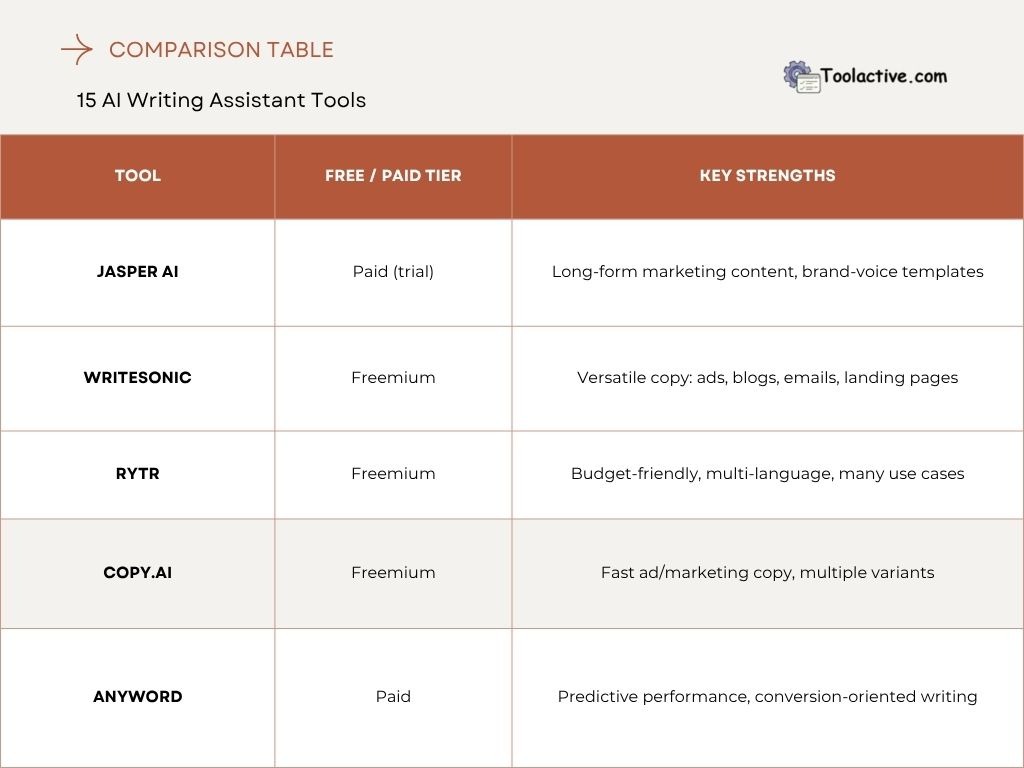
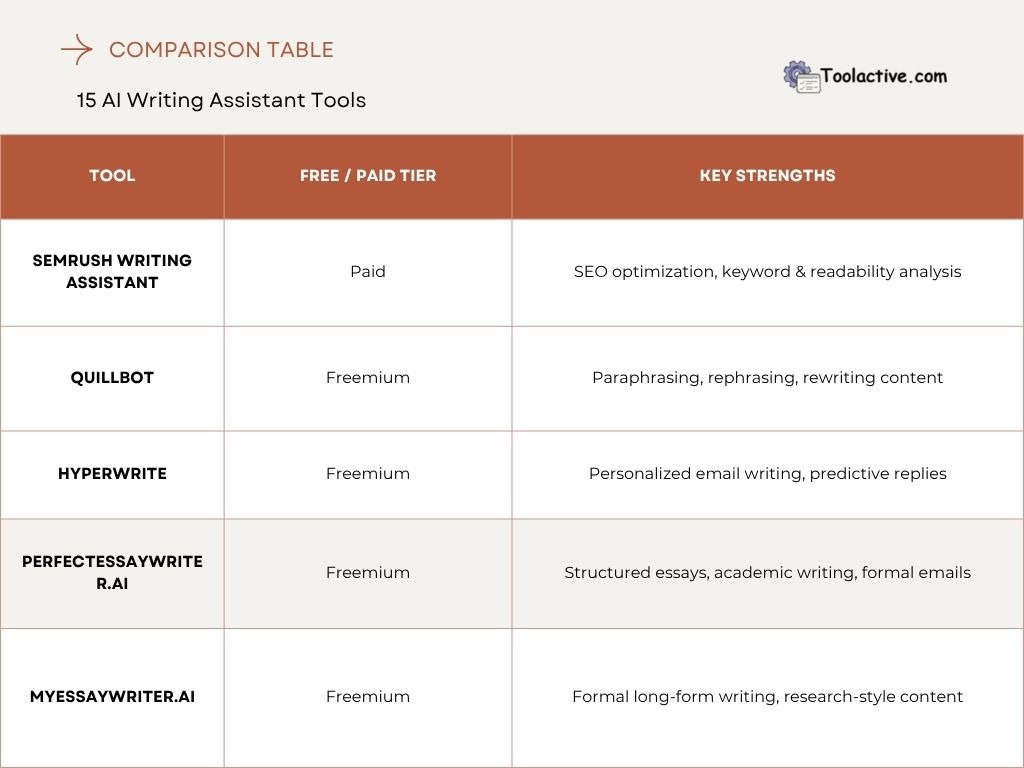

A Closer Look: Top 15 AI Writing Assistant Tools
1. Jasper AI
Jasper remains a powerhouse for marketing teams. Designed for scale, it offers more than 50 templates, brand-voice controls, and long-form generation.
Key Features: Marketing templates, tone control, long-form editor
Pros: Great for high-volume email marketing and content campaigns
Cons: Pricing can be steep; needs human polish for nuance
Best For: Agencies, e-commerce, large marketing teams
Rating: 9.2/10

2. Writesonic
Writesonic is a very flexible AI creative writing assistant with strong support for email, ads, blogs, and product descriptions.
Key Features: Cold email generator, subject-line ideas, multi-language support
Pros: Versatile, easy to use, generous free tier
Cons: Occasional inaccuracies, more editing required
Best For: Small businesses, solopreneurs, marketers
Rating: 8.9/10

3. Rytr
Rytr is a budget-friendly writer AI writing assistant that supports many use cases and offers solid output quality.
Key Features: 30+ languages, tone selection, customizable templates
Pros: Affordable, very easy to start
Cons: Character-limit constraints; less powerful for very long texts
Best For: Freelancers, students, creators on a budget
Rating: 8.7/10
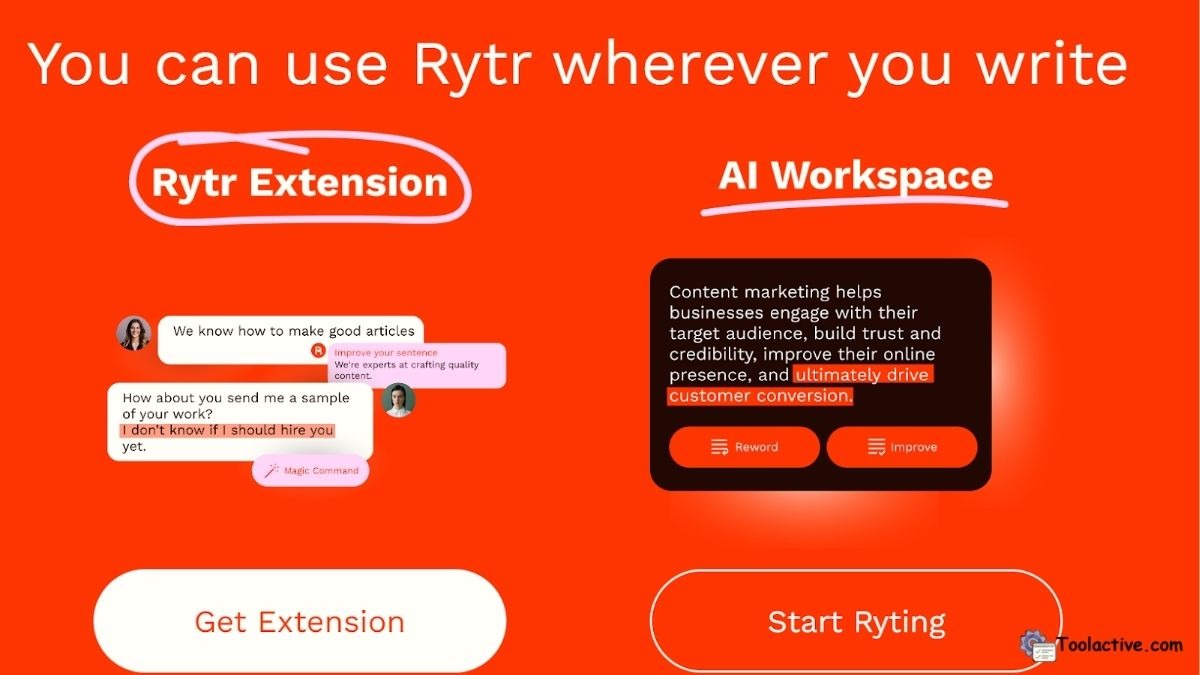
4. Copy.ai
Copy.ai is built for fast copy generation and is especially helpful for cold emails, marketing sequences, and brainstorming.
Key Features: Email templates, CTA generation, multi-variant creation
Pros: Fast, intuitive, good for campaign copy
Cons: May feel repetitive and generic without human tweaks
Best For: Marketers, prospecting teams, campaign writers
Rating: 8.8/10
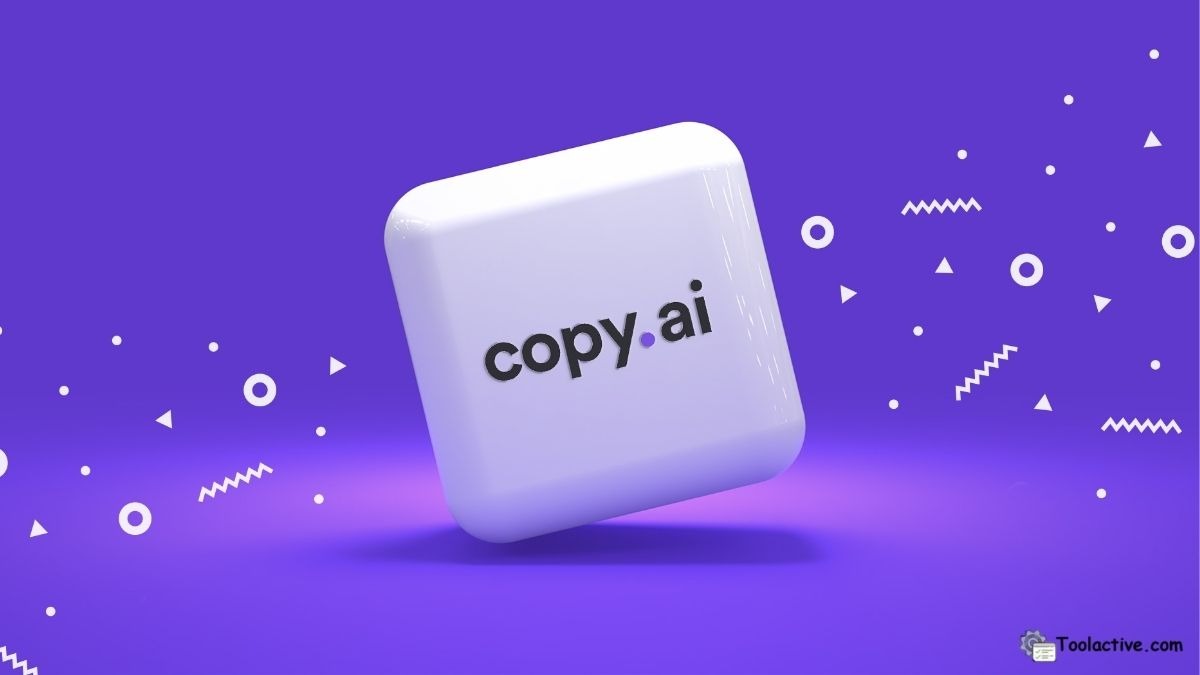
5. Anyword
Anyword stands out with its predictive performance score, estimating how well your email copy will perform based on data.
Key Features: Email scoring, predictive analytics, rewriting tools
Pros: Data-backed optimization, clear performance insights
Cons: Best for short-form; not ideal for articles
Best For: SaaS marketers, CRO specialists, campaign strategists
Rating: 8.6/10
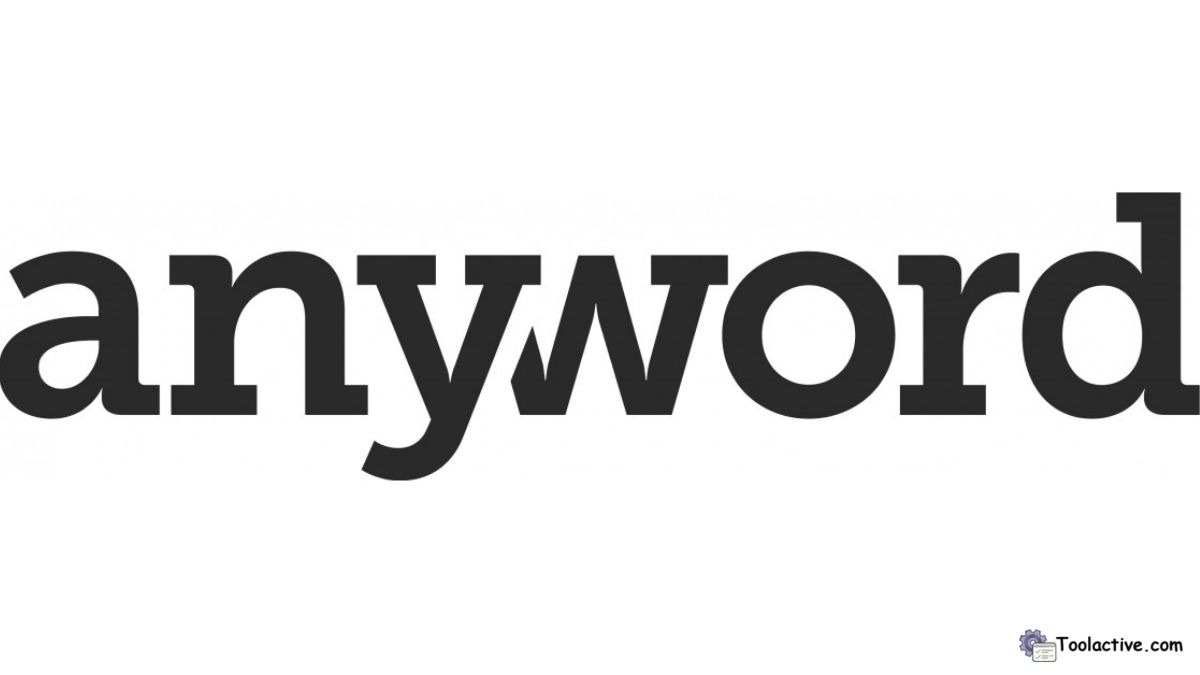
6. Hypotenuse
Hypotenuse is a strong ai assistant writing tool for e-commerce, especially when generating product descriptions and promotional emails.
Key Features: Brand customization, subject-line generator, batch email support
Pros: Efficient for volume, customizable
Cons: Limited template variety, learning curve for branding
Best For: Ecommerce teams, small online stores
Rating: 8.5/10

7. Lavender AI
Lavender uses sales-focused intelligence to improve outbound email writing. It scores drafts on key metrics and helps you write with clarity and purpose.
Key Features: Email scoring, personalization suggestions, CRM integrations
Pros: Very sales-focused, high ROI for outreach
Cons: Sales context only; not ideal for general content
Best For: Sales reps, SDRs, business development teams
Rating: 9.0/10

8. Flowrite
Flowrite is an AI email writing assistant that integrates into Gmail, Outlook, and more via browser extension for fast, well-formatted replies.
Key Features: Chrome extension, tone presets, Gmail/LinkedIn integration
Pros: Speeds up daily inbox work, very intuitive
Cons: Limited for long-form writing, fewer advanced features
Best For: Customer support agents, recruiters, busy professionals
Rating: 8.7/10
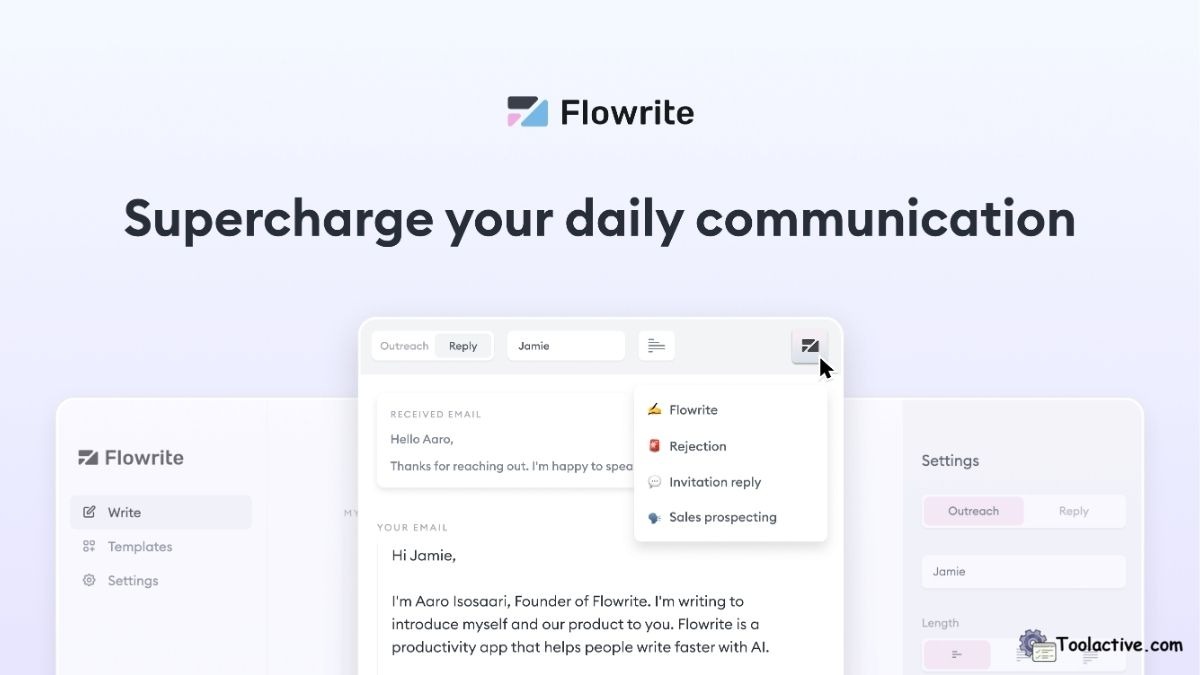
9. Grammarly / GrammarlyGO
GrammarlyGO is more than a grammar checker—it's now an AI creative writing assistant for emails, offering tone-aware draft suggestions.
Key Features: Grammar correction, tone detection, rewrite suggestions
Pros: Reliable, polished, integrates with most email clients
Cons: Not a full content generator; limited for marketing copy
Best For: Professionals focused on clear, error-free writing
Rating: 8.8/10

10. ChatGPT (OpenAI)
ChatGPT remains a highly flexible ai assistant writing tool. It handles everything from brainstorming to email drafts, making it a go-to for creators.
Key Features: Chat interface, powerful context handling, customizable prompts
Pros: Versatile, high quality, multi-purpose
Cons: Requires careful prompt design; occasional factual inaccuracy
Best For: Writers, entrepreneurs, ideation-focused users
Rating: 9.1/10
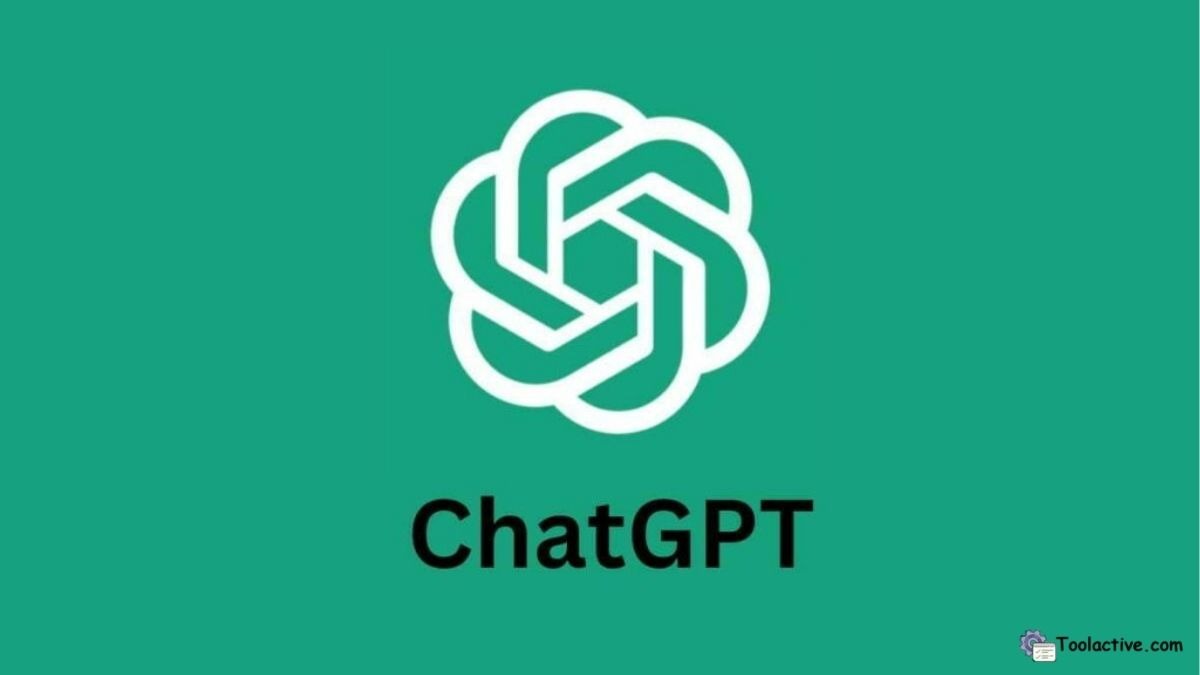
11. SEMrush Writing Assistant
This tool focuses more on optimization than generation, using SEO data to improve email content and structure.
Key Features: Keyword suggestions, SEO scoring, readability checking
Pros: Great for data-driven writers, tight integration with SEMrush tools
Cons: Not a full email writer; optimization-first mindset
Best For: SEO specialists, content strategists
Rating: 8.4/10

12. QuillBot
QuillBot is a creative writing assistant that excels in paraphrasing, rewriting, and smoothing out text.
Key Features: Paraphrasing modes, grammar check, summarizer
Pros: Improves clarity and style, very flexible
Cons: Not great at generating long original content
Best For: Academics, bloggers, anyone rewriting content
Rating: 8.6/10
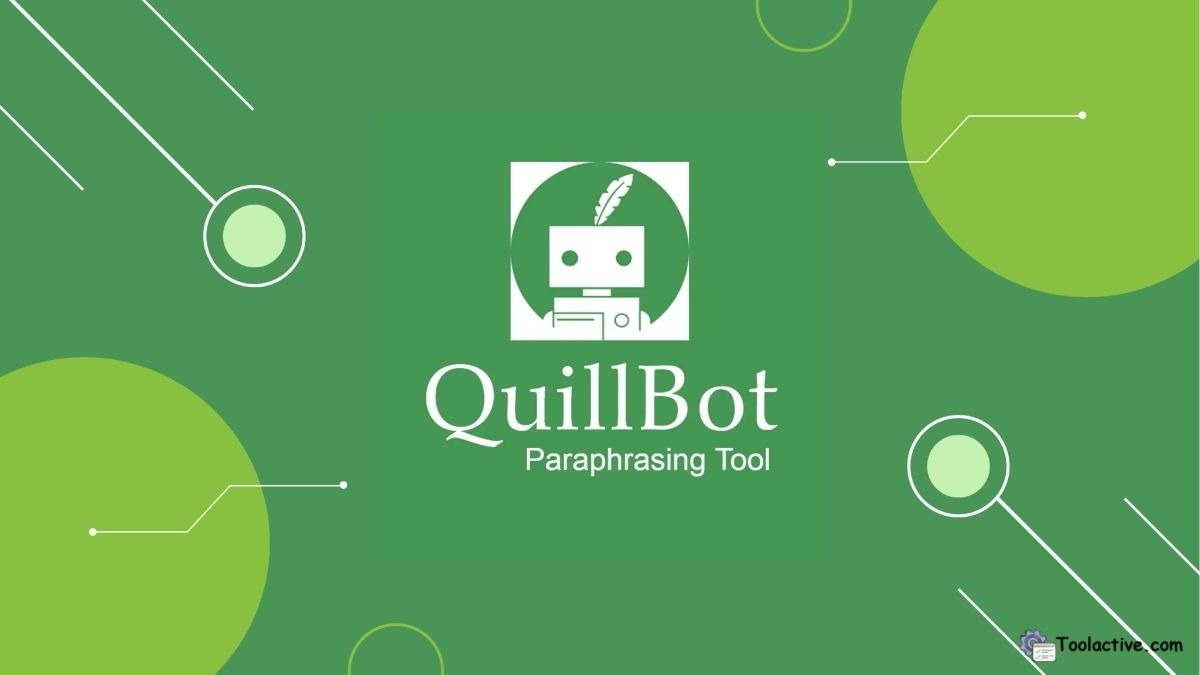
13. Hyperwrite
Hyperwrite helps you write personalized emails by learning from your prompts and style. It can also rewrite replies.
Key Features: Persona generation, predictive replies, email templates
Pros: Deep personalization, useful for outreach
Cons: Requires prompt tuning; interface can be basic
Best For: Sales professionals, B2B writers, relationship builders
Rating: 8.5/10
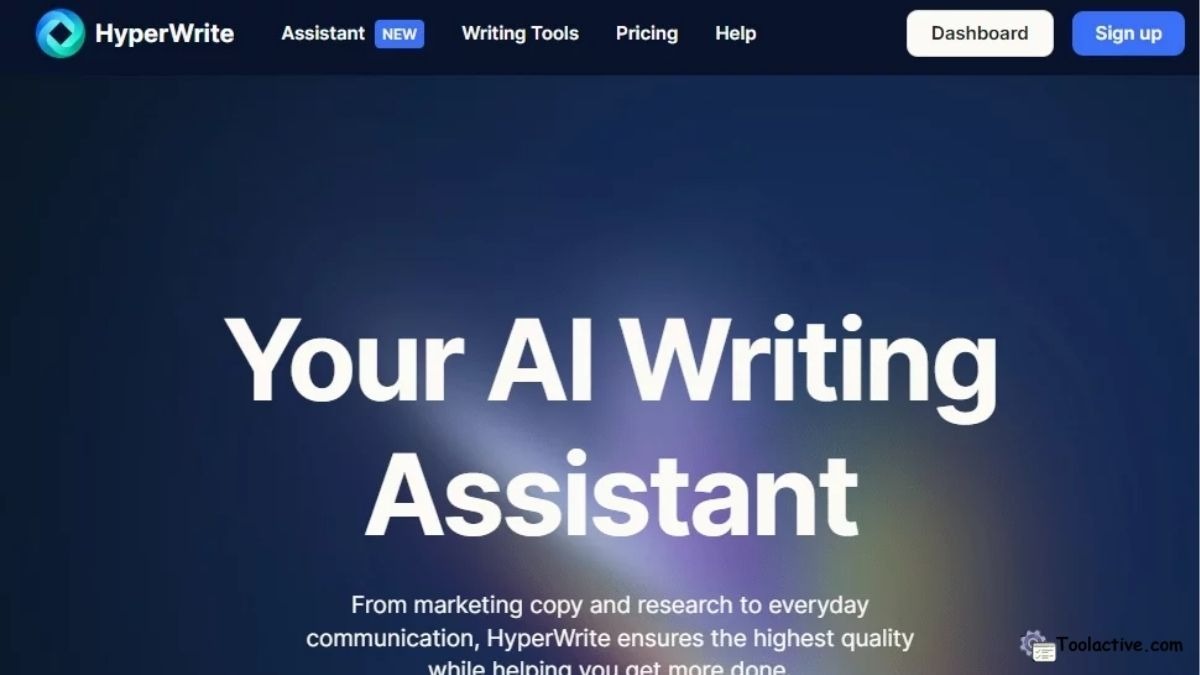
14. PerfectEssayWriter.ai
While originally focused on essays, this AI creative writing assistant also works well for structured email writing and research-heavy messages.
Key Features: Essay-style outline, citation support, polished prose
Pros: Strong academic tone, dependable structure
Cons: Not built for marketing or conversational emails
Best For: Educators, students, research-driven writers
Rating: 8.3/10
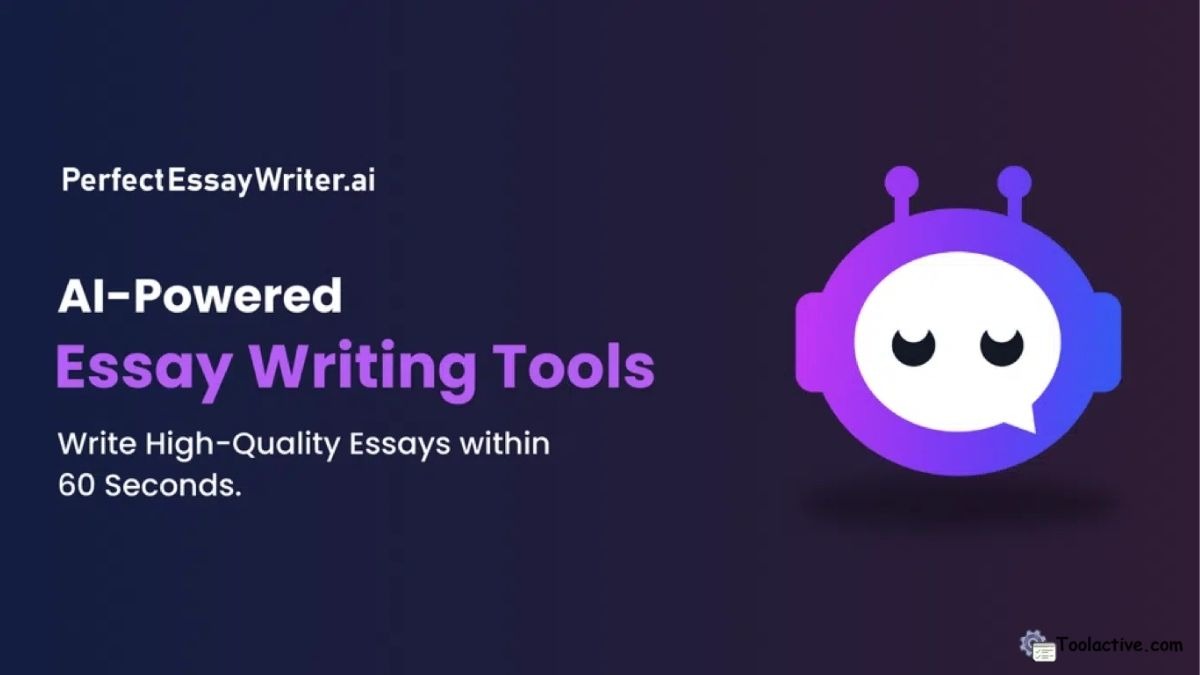
15. MyEssayWriter.ai
Similar to PerfectEssayWriter, MyEssayWriter.ai helps produce longer, more formal writing, but also handles professional email drafts with ease.
Key Features: Long-form writing, grammar consistency, formal tone
Pros: Reliable for professional / educational writing
Cons: Less suited to snappy marketing emails
Best For: Professionals, students, academic communications
Rating: 8.2/10
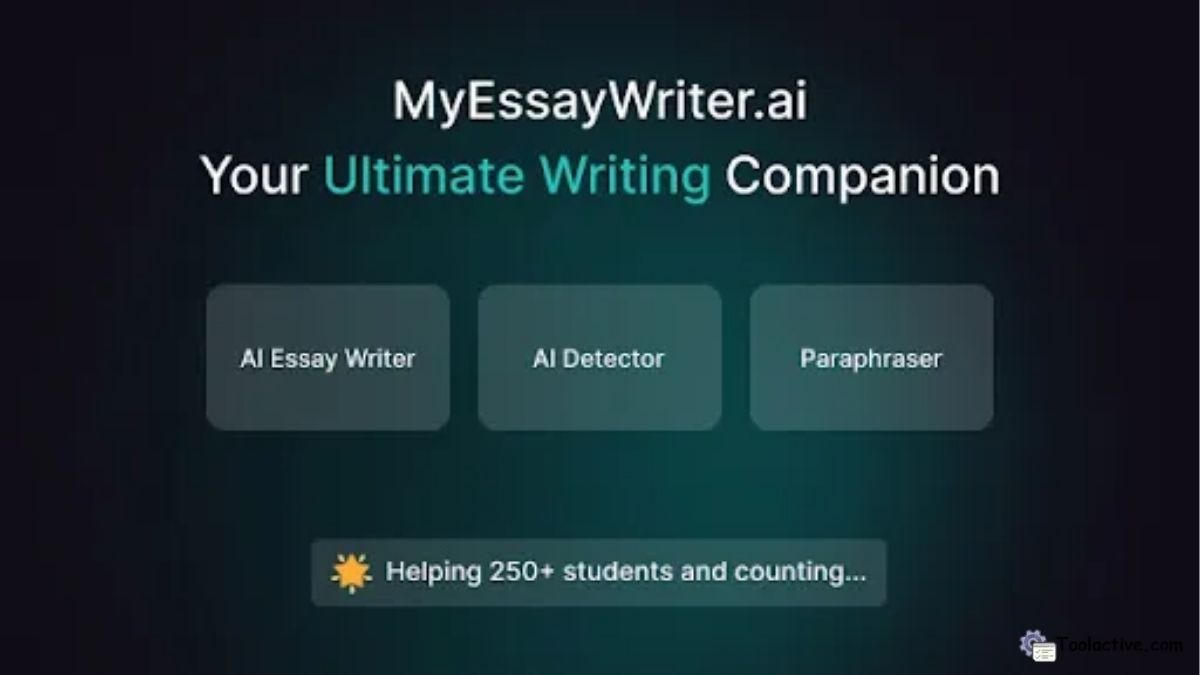
Explore our Gohighlevel store
Free & Freemium AI Writing Tools — Free Plan Comparison
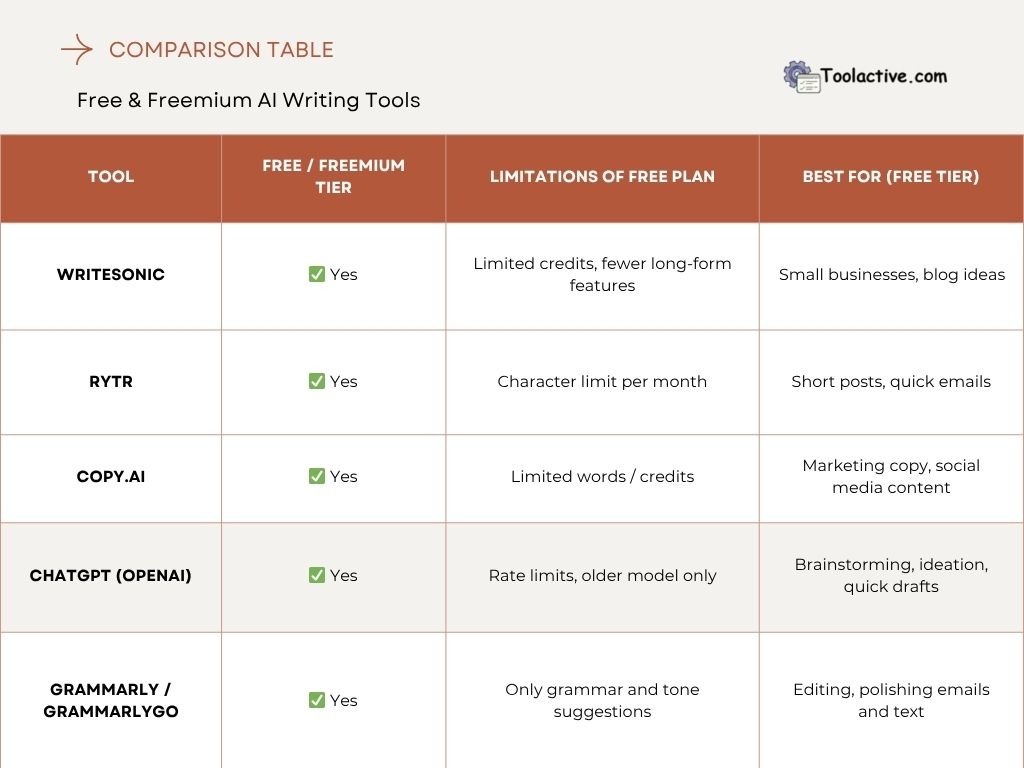
How to Choose Your Ideal AI Creative Writing Assistant
When deciding which ai assistant writing tool is right for you, think about:
-
Your main use case:
-
Cold or sales emails → Lavender AI, Copy.ai
-
Marketing sequences → Jasper, Writesonic
-
Long-form content → Claude Pro, MyEssayWriter.ai
-
Creative writing / fiction → Sudowrite
-
-
Budget vs Volume:
-
Free or low-cost: Rytr, DeepSeek, Hyperwrite
-
Mid-tier: Copy.ai, Jasper
-
Premium: Claude Pro, sophisticated SEO tools
-
-
Integration needs:
-
Email workflows (Gmail, Outlook) → Flowrite
-
SEO-heavy pipelines → SEMrush Writing Assistant
-
Collaboration & scaling → Jasper, Writesonic
-
-
Editing & authenticity:
Use the tool to generate a draft, then refine with human editing to ensure your voice and clarity
FAQs About AI Writing Assistant Tools
Q1: Can a writer AI writing assistant replace human writers?
Not entirely — these writer ai writing assistant tools are designed to speed up ideation and drafting, but human editing still matters for voice, accuracy, and nuance.
Q2: Are writing assistant tools safe to use with my brand voice?
Yes — many tools (like Jasper, Lavender) let you set tone, style, and brand voice. Always review output to maintain consistency.
Q3: Do I need SEO knowledge to use an AI writing assistant?
Not necessarily. Tools like Frase IO and SEMrush Writing Assistant help with SEO structure. You can pick a writing assistant that supports SEO directly.
Q4: Can I use an AI assistant writing tool for emails only?
Absolutely. Many tools on this list are ideal for email tasks: Flowrite, Copy.ai, Anyword, Lavender.
Q5: Is there a free AI creative writing assistant that’s truly useful?
Yes — tools like Rytr, DeepSeek, and QuillBot offer free plans that are fully usable for everyday writing.
Final Thoughts
In 2025, AI writing assistant tools have never been more powerful or diverse. Whether you're writing marketing emails, long-form research, or creative fiction, the right ai creative writing assistant can change your productivity game.
From our tests at Toolactive, Jasper AI and Writesonic shine for marketing, Sudowrite for creative writing, and Claude Pro for deep analysis. Meanwhile, Flowrite and DeepSeek provide incredible value for daily communication.
If there’s one takeaway: use these AI tools as collaborators, not replacements. Generate your draft, then refine it with your human voice.
Want more? Explore tutorials, prompt libraries, and expert guides at Toolactive to level up your writing with AI.

.jpg)





.jpg)






